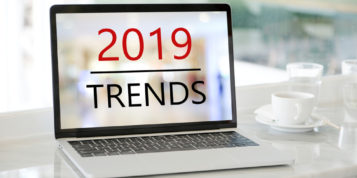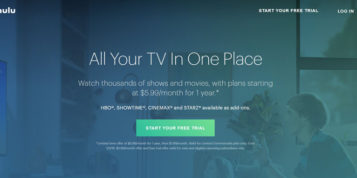While the ten busiest ecommerce shopping days in 2018 all fell in the three weeks between Thanksgiving and December 17th, the sales opportunities outside of this period are vast. Too often, the focus lies on the seasonal peak, at expense of cultivating longer term customer relationships and driving revenue throughout the rest of the year. Not only are there multiple channels for marketers to communicate with their customers, but also endless occasions to capture their interest. Spending this Valentine’s Day, for instance, is expected to have topped that of 2018, so for the brands delivering a relevant experience to consumers, the opportunities to secure extra sales are there.
We have taken a look at how marketers put themselves in the strongest position to drive deeper engagement with customers throughout the year, and make them first choice over competitors.
Mapping the year
Brands that are serious about building a predictable, constant stream of revenue must plan for all 52 weeks in the year. From mapping out annual events like gift-giving peaks and back to school, to identifying occasions that might be a less frequent occurrence, but a great opportunity to capture the interest and attention of a customer. Sporting events, like the upcoming rugby world cup or more unusual events in the calendar, such as National Unicorn Day, could offer inspiration to marketing campaigns and content. Of course, make sure it is in keeping with the broader brand and right for the customer base.
Identifying opportunities to inspire campaign creative and run special offers outside of the usual peaks are effective at engaging customers with something unexpected. For instance, fashion brands could provide suggestions for the best festival outfit before Glastonbury. Not only do these provide relevant themes to build marketing content around, but it allows brands to inject personality into communications, preventing customers being turned off by reading the same messages again and again.
Don’t neglect the basics
Convenience lies at the heart of meeting customer expectations and driving long-term loyalty. The run up to a gift-giving event, such as Mother’s Day or Valentine’s Day, puts the spotlight on this even further as customers are more likely to make a purchase, and the competition between brands is heightened.
Implementing a dynamic countdown timer on websites or within emails to raise awareness of final shipping dates will catch the attention of customers and mean they don’t have to search for the information. Gift guides sorted by gender, budget or best sellers are a great way to showcase your products and inspire customers. Tapping into the self-gifting trend with promotions such as a free gift on every purchase or buy one, get one free, can also encourage the customer to purchase with you. Or running offers such as free shipping for a limited period of time. For example, fitness brands could consider shipping purchases over the London Marathon weekend for free.
Getting it right for the customer
Whilst the number of occasions and opportunities to drive engagement with a customer are vast, the communication has to be relevant to the individual and fit with the brand. Building a picture of the year should go hand in hand with analysing customer data to make campaigns as personal and effective as possible, so that customers are receiving the content that’s most relevant to them. For brands with an international customer base this is important where annual events, such as Mother’s Day may fall at different times during the year or where seasons will vary (e.g. the weather in London vs. LA in November).
Also keep in mind that a customer’s purchase and browse behaviour will change during the year, depending on if they are shopping for themselves or someone else. Recommendations are vital to showing understanding of the individual and adding the important layer of convenience, but their browse behaviour around a gift-giving event, such as Father’s Day, may not reflect their preferences in the long-term. Shifting the recommendations strategy at these key points in the year will ensure that customers don’t continue to receive recommendations based on a gift they purchased for someone else after the event as passed.
Before gift-giving events, you could base product suggestions on the shopper’s most recent browse behaviour and mix in some social proof, such as recommending the most popular products in the browsed product category. To inspire customers and make it easy to discover other items they might like, is also vital to include recommendations in all email communications, from the newsletter to cart and browse abandonment emails. After the holiday, product recommendations should again consider the customer’s longer-term purchase and browsing behaviour.
No matter what the occasion for engaging a customer during the year, ensuring the experience is creative, relevant and personalised to them will mean they are more likely to return to your brand again in the future. With a wealth of opportunities to create campaigns that capture customer interest, marketers that are well prepared all year round will be rewarded with long-term loyalty.





